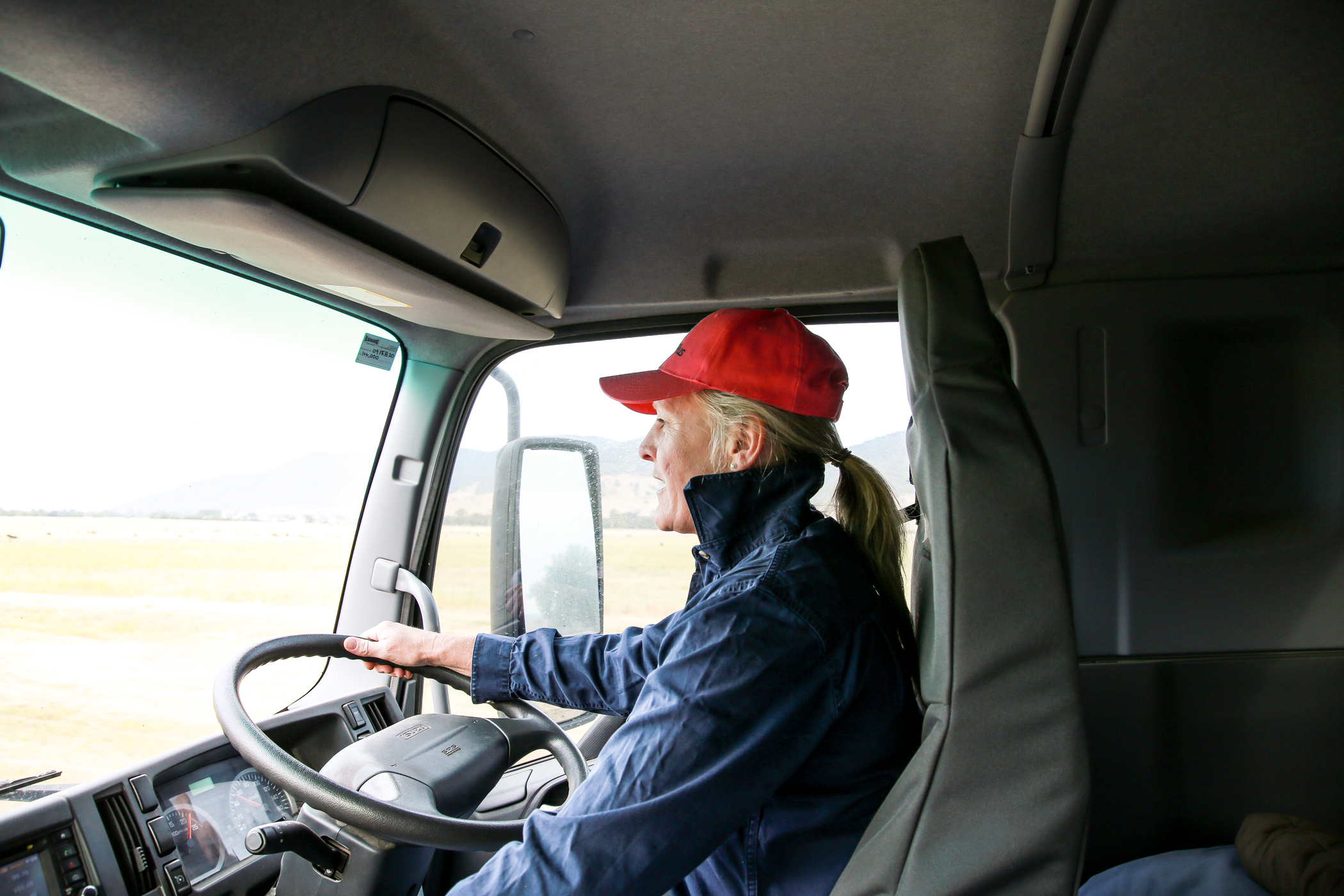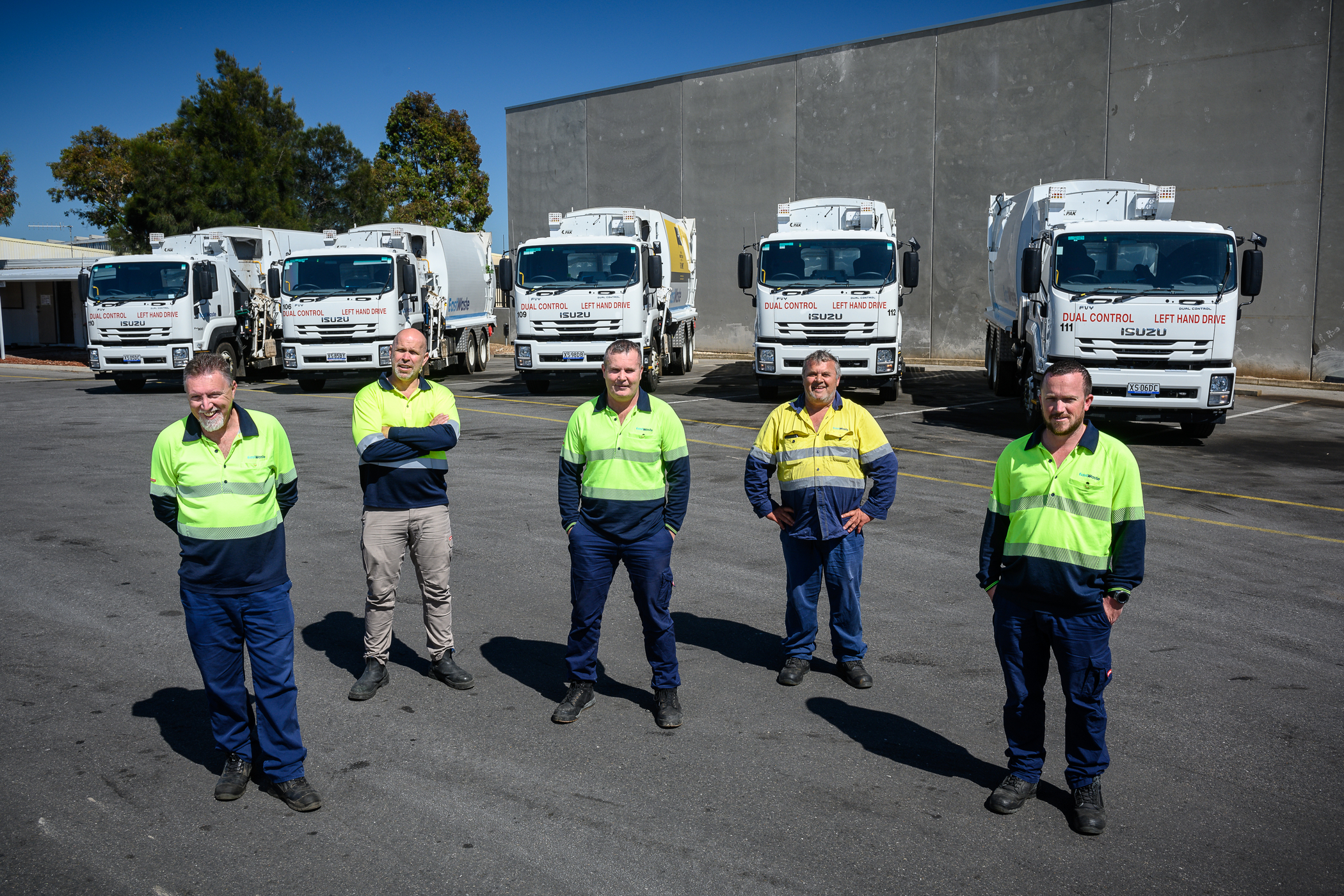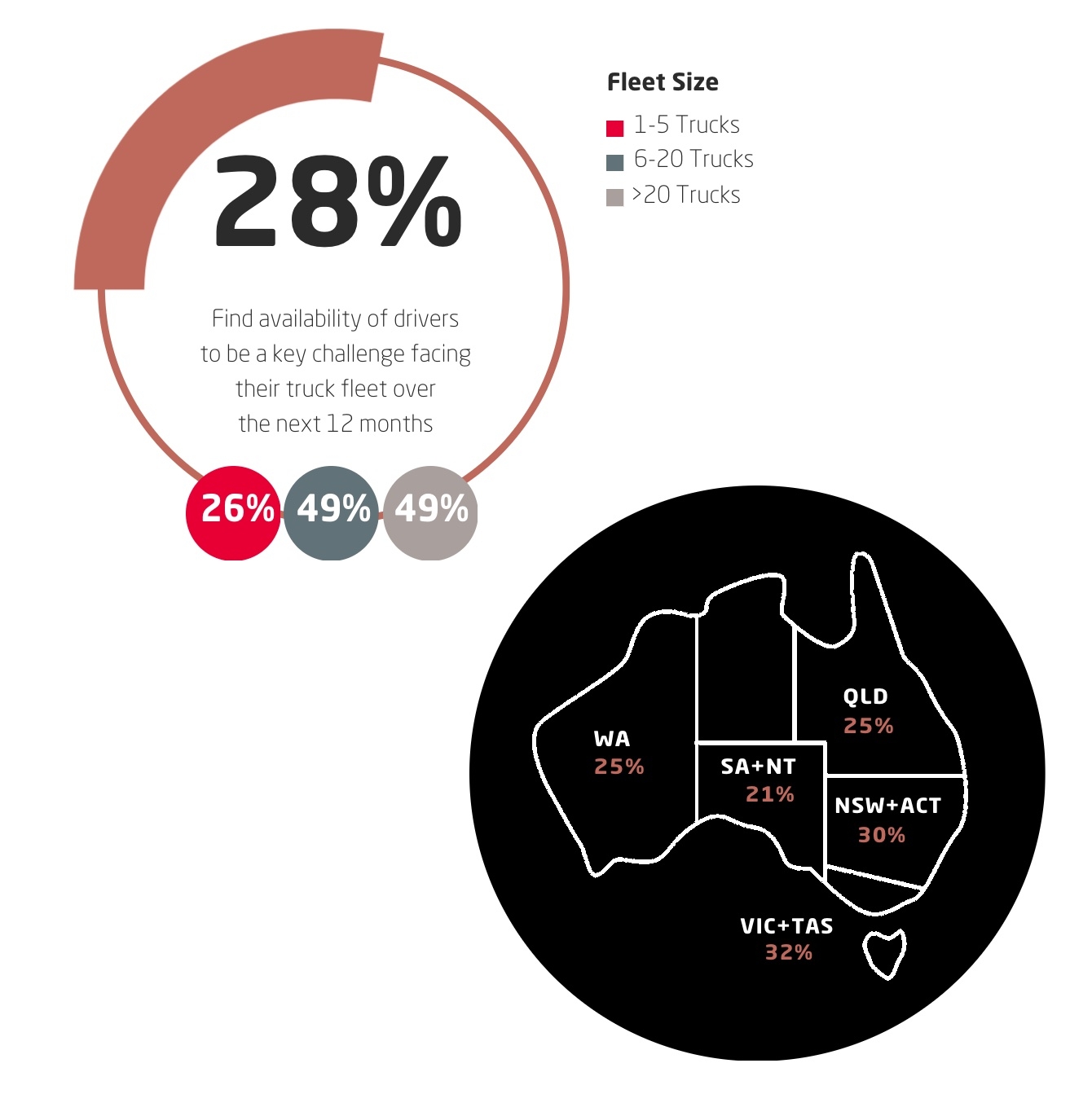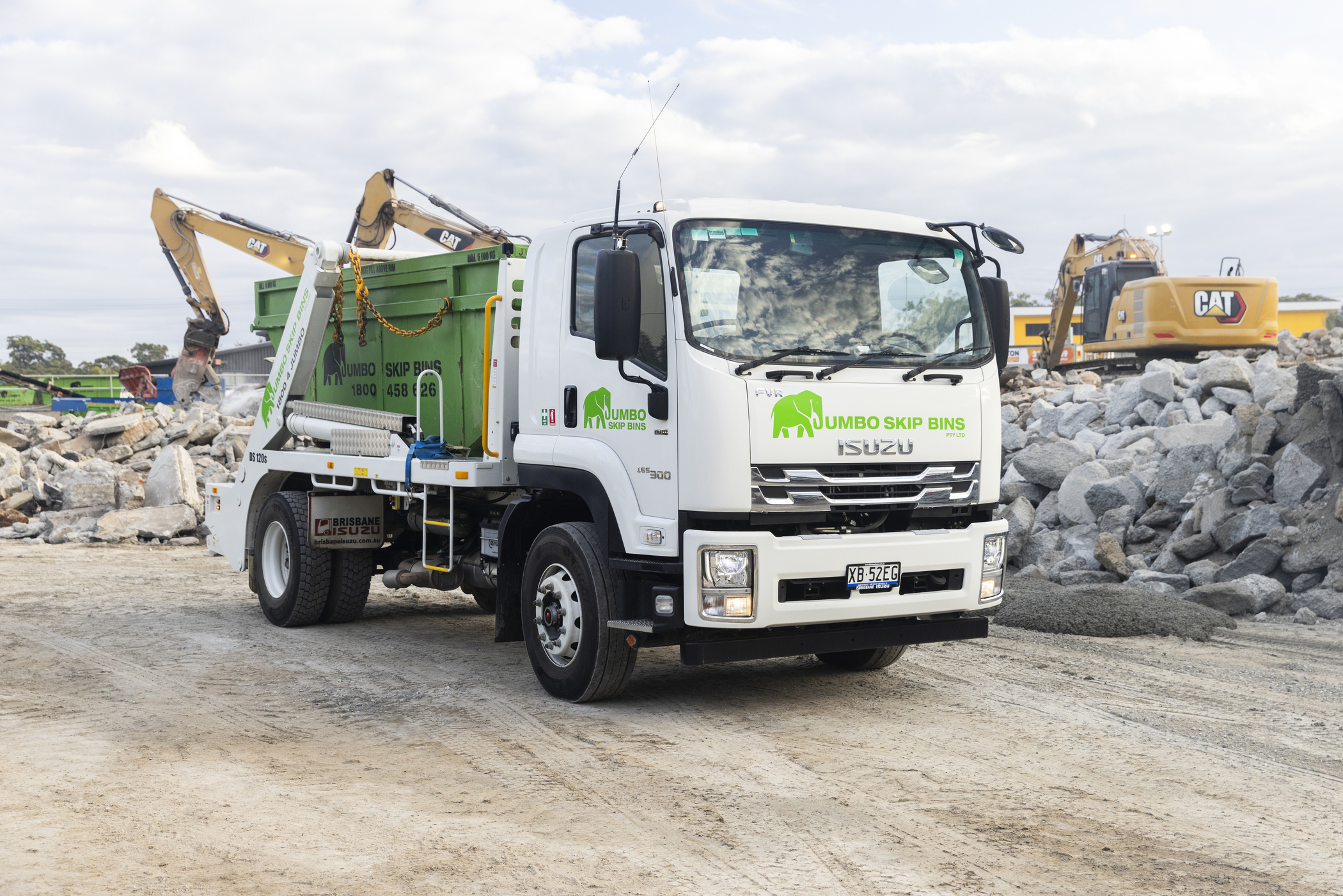What Does it Take to Become a Skilled Truck Driver?

- Heavy freight, refrigerated or dangerous goods transport
- Livestock transport
- Waste or liquid waste collector
- Fuel & chemical tanking
- Agitator driver
- Tip truck driver

Driver insight: “I do a lot of long-distance travelling. I can be picking up livestock in the Snowy Mountains farming district, driving long distances on country back roads and then travelling to the livestock selling yards in regional centres, all in the same day.” — Belinda McKimmie, M&B McKimmie Livestock Transport
How to get qualified Talk to any driver and their story of how they ended up in a truck cab will completely different. There are many paths to getting qualified, but here’s a few popular choices:- Heavy vehicle licence test
- Formal study route
- Apprenticeship and traineeships (including on-the-job accreditation)
- Light Rigid licence (LR)—GVM between 4.5 tonne and 8 tonne
- Medium Rigid licence (MR)—GVM over 8 tonne / no more than two axles
- Heavy Rigid licence (HR)—GVM over 8 tonne / three or more axles
- Heavy combination licence (HC)—GVM over 9 tonne / prime mover or rigid vehicle attached to a single semi-trailer / must have held a MR or HR licence for at least 12 months
- Multi combination licence (MC)—any vehicle or combination / must have held a HR or HC licence for at least 12 months

Expert tip: “I don’t train people on flat ground where it’s nice and easy, with no obstacles on the road. If you’re going to have to drive in the mountains, you need to be training on the mountains.” — Paul Cotteril, Coachbiz (Integrated Vehicle Training & Licensing Provider)
Formal study route Common courses, including a Certificate III or Certificate IV in Driving Operations (which can set you up for a range of truck driving work) are again provided by RTOs. At the end of the process, you come away fully qualified (and licensed) to start a job in a chosen field. If you already have a truck licence, pairing a wealth of experience on road with a certificate in an additional field like logistics, warehouse operations or even business management could turn out to be an invaluable career step. The government’s National Careers Institute has a comprehensive, location-specific list of training providers, fee and course information. There’s also an FAQ factsheet about choosing the right training provider here. Apprenticeships & Traineeships There are businesses in every field that regularly take on apprentices, and in this case, it’s a matter of finding the right fit and securing a position in the traditional job market. You might even be lucky enough to score a job with a company that’s an RTO or accredited trainer. For others, a Group Training Organisation that employs apprentices and trainees, and hosts them out to employers is another option. Working with an Apprenticeship Network Provider can also be a good place to start. Have a look at the Australian Apprenticeships Pathways website for more information. Safety & self-care Aside from licensing, knowing the relevant road rules like the back of your hand and getting as much practical on-the-job experience as possible... what else do skilled truck drivers need to consider? Managing fatigue and taking proper safety precautions are all part and parcel of Australia’s Chain of Responsibility laws (alongside occupational health and safety standards). Like any demanding work, practising self-care while driving is also crucial for physical and mental wellbeing, as well as overall job satisfaction.
Driver insight: “Anyone driving a truck and operating the controls knows the physical toll it can take on you. It’s exhausting. It can be up to 8 to 10 hours a day... we need to make sure our drivers are having sufficient fatigue breaks.” — Ray Pawa, East Waste.
Engaging clients Combine good habits and driving prowess with a little working knowledge on how to attract, engage and retain clients—and you’ve got a ticket to one smart operation. A large portion of truckies are self-employed owner/operators, so being customer savvy can never hurt. And in the new age of online shopping and instant Google reviews... it’s good to remember that customer service can make or break a reputation. There are lots of options to upskill your customer game, with Certificates in Customer Engagement or online learning courses tailored specifically for trucking industries.
Driver insight: “About 60 per cent of our work comes from word of mouth and client retention. We need to have a great relationship with our commercial clients. If they ask us to jump, we say, ‘how high?’” — Michael Klukteweciz, Upside Projects.
Skilled drivers in demand It’s been well-publicised that Australia has been facing a skilled driver shortage for some time, with factors like an ageing workforce and complex licencing requirements all having an impact. Research shows that large fleets are particularly worried about finding skilled drivers in the future. It’s no surprise then that many of the best-paying trucking jobs are usually those that involve extensive training or remote work: moving difficult loads, dangerous goods, mining or navigating risky terrain.
Generally speaking, the more skill and experience required to do a job, the higher it pays—just one more thing to think about if you’re changing career or starting out on your professional driving journey!
Want to read more about driving as a career? Check out a Day in the Life with Belinda McKimmie, a self-employed livestock transport operator.
It’s no surprise then that many of the best-paying trucking jobs are usually those that involve extensive training or remote work: moving difficult loads, dangerous goods, mining or navigating risky terrain.
Generally speaking, the more skill and experience required to do a job, the higher it pays—just one more thing to think about if you’re changing career or starting out on your professional driving journey!
Want to read more about driving as a career? Check out a Day in the Life with Belinda McKimmie, a self-employed livestock transport operator.



Playtime’s over, get $3,500* to spend on extras.
If you’re ready to get serious about tackling bigger jobs, grab yourself an NLR 45-150 AMT SWB Traypack from the Ready-to-Work range for $62,990 drive away*. And to prove we aren’t playing, buy any NLR Traypack before June 30 and you’ll get $3,500* to spend on genuine accessories or an Essentials service agreement.
Learn more



